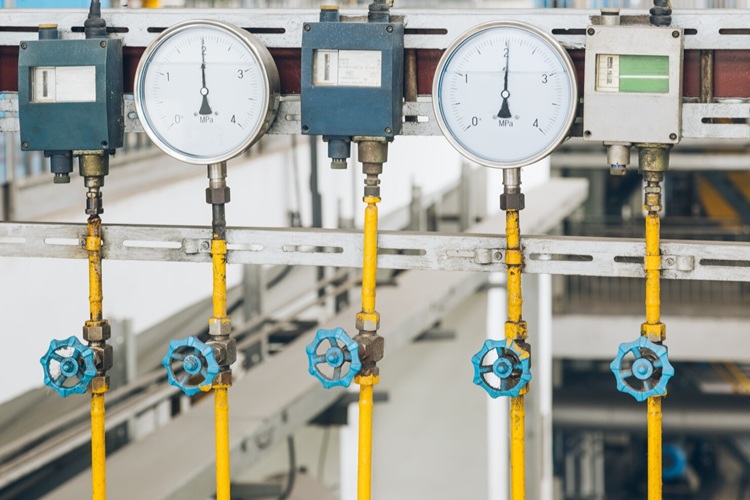Many American industries are undergoing a digital transformation, with the implementation of technologies such as artificial intelligence, the Internet of Things (IoT), advanced robotics, and cloud computing. These technologies are helping companies to optimize their operations, improve productivity, and create new business models and revenue streams.
In predictive monitoring in industries, one of the most innovative technologies in Industry 4.0 is smart sensors, which can generate a significant volume of data and constantly monitor the equipment.
Using this technology in industrial plants makes the machines maintain high performance throughout their use, which leads to a highly productive park and competitive advantage for the company.
In this article, learn more about the role of smart sensors in Industry 4.0 and its benefits in industrial parks.
Evolution of predictive monitoring and Industry 4.0
With the concept of predictive maintenance in the mid-1970s, software development allowed better planning, control, and monitoring of maintenance services.
However, despite these advances, the lack of interaction between the engineering, maintenance, and operation areas prevented the best results. Therefore, premature failure rates were still high.
From the 2000s on, with the consolidation of maintenance engineering activities, failure analysis was established to improve equipment performance.
In this context, predictive maintenance started to be increasingly used in the so-called Industry 4.0 – concept used for the first time in 2011, by the German government, in its quest to promote the computerization of manufacturing and data integration.
Industry 4.0 and the Internet of Things (IoT)
Also called the fourth industrial revolution, Industry 4.0 is characterized by intelligent technologies such as Artificial Intelligence, Machine Learning, Robotics, and Analytics based on big data.
With these resources, it became possible for much greater interaction between machines, which gained greater integration capacity and autonomy. Thus, with the Internet of Things, devices are monitored through smart online sensors, allowing maintenance to be carried out more consistently and in the shortest possible time to predict and avoid unwanted occurrences.
In turn, Big Data resources enable the management of a large amount of data, contributing to the fact that machine maintenance decisions can be made before real problems occur.
Since then, thanks to the development of new technologies, predictive maintenance has been improving, indicating equipment failures with increasing accuracy and richness of detail.
Understand how smart sensors have changed the predictive market.
The predictive monitoring of machines was done on-site until some time ago, which required the presence of technicians in factories to collect data. For this, a cable attached a sensor to the end of the equipment. The problem is that this process was much more laborious and expensive and therefore was usually only done on a monthly basis.
With smart sensors, predictive maintenance eliminates the need for in-person inspections. Data collection is done online and automatically, without disassembling and reassembling machines to determine if they are running well.
The sensors connected to the machines generate data that is captured and transmitted via the internet. This information is then analyzed to predict maintenance needs and limit the time this equipment will remain idle.
Benefits of using sensors for industries
* More accurate and frequent remote monitoring, which enables greater predictability of failures and avoids unnecessary repairs;
* Previously determines the need for maintenance, eliminating the need to disassemble the machines for inspections;
* Avoids problems that may generate the need for corrective maintenance, which is more complex and expensive;
* Decreased machine downtime, ensuring production continuity and increasing efficiency and safety on the production line;
* Increased useful life of equipment parts, reducing the need to stock spare parts;
*Generating a large amount of data can be combined to indicate the right moment to carry out predictive maintenance, increasing decision-making agility.
Applications of smart sensors in Industry 4.0
The use of wireless sensors in predictive maintenance enables the detection of wear and bearing defects, misalignments, imbalances, looseness, and other deficiencies that lead to machine failures and unexpected stops in the production line. This service can be applied in engines, electronic and power systems, boilers, steam system components, and transformers, among other equipment.
Industries from the most diverse sectors can benefit from this monitoring, even in dangerous places with difficult access.
What are the main types of smart sensors used in industry?
* Vibration: sees mechanical failures by analyzing the vibration of the equipment, such as unbalance, lousy bearing, or coupling.
* Temperature/Humidity measures the equipment’s temperature and humidity.
* Oil: analyzes the oil/lubricant viscosity present in the equipment.
* Ultrasound: Monitors leakage of compressed air, steam, and vacuum, detecting failures in bearings, valves, and electrical substations and saving energy.
Get to know the smart sensor we use in SEMEQ.
The SEMEQ online vibration smart sensor can detect numerous potential electrical and mechanical failure modes. By analyzing temperature, vibration, electrical current, and other process variables, it is able to cover 100% of the potential failure modes in electric motors.
Besides, SEMEQ’s wireless sensors have high sensitivity, one of the most reliable in the market for detecting minimal vibrations indicative of potential failures.
This happens because we maintain an internal Research & Development department to produce sensors with the most advanced technologies in the market. Thus, we can guarantee efficient and reliable sensors for our customers.
SEMEQ wireless sensor features
- 10kHZ sensitivity – detects bearing and gear failures.
- Durable battery for up to three (3) years and replaceable.
- No need to discard the sensor when the battery runs out.
- 3G/4G connection and independent operation.
- Triggers and variable charges.
Transform your industrial park: talk to our consultants.
Semeq has nearly 30 years of existence and has extensive expertise in monitoring wireless predictive maintenance in many industrial segments and small, medium, and large plants.
We are present in 40 countries and have more than 500 plants monitored with our technology. We have offices in North America, South America, Asia, and Europe.
Your company can also benefit from the effects of Industry 4.0 and the use of smart sensors in predictive monitoring.
Count on us to help you optimize production processes, reduce equipment failures, and increase plant performance.
Contact us now!




